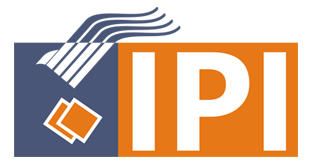Kontribusi Tokoh Punakawan pada Pagelaran Wayang Kulit terhadap Pendidikan Islam kepada Masyarakat
(1) Universitas Indraprasta PGRI
(*) Corresponding Author
Abstract
Wayang as the only entertainment for the people is used as a media approach to convey Islamic teaching values. This is adopted by Sunan Kalijaga as a media approach. By including a new character which is The Punakawan in the middle of a popular character previously, Pandawa Lima, even though it is not in the original story. Wayang is so attached to Javanese culture and tradition although that story is taken from India. The punakawan figure becomes a differentiator in the wayang kulit story that is carried out with the Javanese punakawan's distinctive name having a prerequisite meaning with Islamic values. Punakawan also teaches moderation in religion that does not intersect with local culture. This study uses a literature study approach, data collected through books, notes, historical stories and others. Islamic education always puts forward a moral and moral approach, from this aspect, the Punakawan figures are raised. The Javanese people believe that the existence of Punakawan figures seems to have lived in the real world, for example Mount Tidar in Cilalap Regency is believed to be the place where Semar lives.
Keywords
Full Text:
PDF (Indonesian)References
E. Setiawan, Nilai Filosofi Wayang Kulit sebagai Media Dakwah, J. Al-Hikmah, vol. 18, no. 1, pp. 33-49, 2020, doi: 10.35719/alhikmah.v18i1.21.
A. J. Darmawan, Visual Design Face Painting: Language Expressions Stylized for Wayang Punakawan, Humaniora, 2017, doi: 10.21512/humaniora.v8i1.3696.
N. Ranuhandoko dan S. Sidhartani, Makna Budi Pekerti Melalui Cerita Punakawan: Analisis Visual dalam Seni Kreativitas Komik Kontemporer, Mudra J. Seni Budaya, vol. 34, no. 1, pp. 53-60, 2019, doi: 10.31091/mudra.v34i1.564.
Sukardi. Metodologi Penelitian Pendidikan: Kompetensi dan Praktiknya / Sukardi. Jakarta: Bumi Aksara, 2009.
S. Arikunto. Prosedur Penelitian suatu Pendekatan Praktik. Jakarta : Rineka Cipta, 2014.
Sugiyono. Memahami Penelitian Kualitatif. Bandung: Alfabeta, 2016.
N. Siswanto, Filosofi Kepemimpinan Semar, Panggung, vol. 29, no. 3, pp. 254-268, 2019, doi: 10.26742/panggung.v29i3.1011.
W. N. E. Saputra, Identifikasi Karakteristik Konselor Efektif Berdasarkan Tokoh Punakawan Bagong, J. Konseling dan Pendidik., vol. 4, no. 1, pp. 59-66, 2016.
D. K. Aziz, Akulturasi Islam dan Budaya Jawa, Fikrah, vol. 1, no. 2, 253-286, 2013.
Marsaid, Islam dan Kebudayaan: Wayang sebagai Media Pendidikan Islam di Nusantara, Kontemplasi J. Ilmu-Ilmu Ushuluddin, 2016.
W. J. Sastrawan, Traces of the Ramayana and Mahabharata in Javanese and Malay Literature, by Ding Choo Ming and Willem van der Molen (eds.), Bijdr. tot Taal-, Land- en Volkenkd., 2019, doi: 10.1163/22134379-17501009.
DOI: http://dx.doi.org/10.30998/sap.v6i2.9958
Refbacks
- There are currently no refbacks.
Copyright (c) 2021 Eddy Saputra, M.Pd.I

This work is licensed under a Creative Commons Attribution-NonCommercial-NoDerivatives 4.0 International License.
SAP (Susunan Artikel Pendidikan) indexed by:






Ciptaan disebarluaskan di bawah Lisensi Creative Commons Atribusi 4.0 Internasional.
View My Statis
Contact Campus A TB. Simatupang, Jl. Nangka Raya No.58C Tanjung Barat, Kec. Jagakarsa - Jakarta Selatan 12530 Telp : (021) 7818718, (021) 78835283 Campus B Jl. Raya Tengah N0.80 Kel. Gedong, Kec. Ps. Rebo - Jakarta Timur 13760 Telp : (021) 87781300, (021) 87797409



 Accredited Certificate
Accredited Certificate
 Tamplate Journal
Tamplate Journal




















